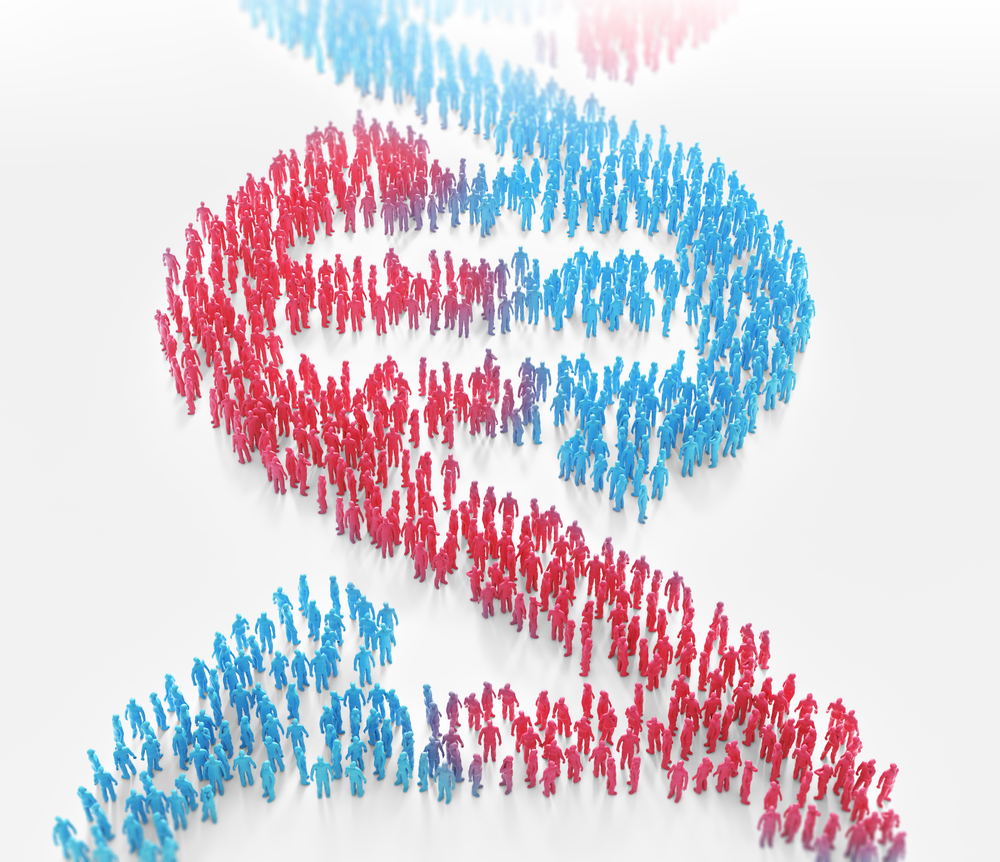Researchers Discover How Key Genetic Risk Factor for MS Operates
Written by |

Scientists have uncovered the molecular mechanism by which the genetic variant HLA-DRB1*15:01 is the strongest risk factor for multiple sclerosis, new research shows.
Analyzing several studies, researchers found that the risk linked with HLA-DRB1 variants is due to a specific DNA modification called methylation. Methylation is a process by which methyl groups are added to the DNA molecule; it can change the activity of DNA, but not its sequence.
DNA methylation in some HLA-DRB1 variants may predispose or protect against the disease.
The discovery may help develop new therapeutic approaches to treat multiple sclerosis by tackling this molecular mechanism.
The findings were published in the study “DNA methylation as a mediator of HLA-DRB1*15:01 and a protective variant in multiple sclerosis” in the journal Nature Communications.
Variations in genes belonging to the human leukocyte antigen (HLA) complex have been known for more than 40 years to influence people’s susceptibility for multiple sclerosis. A variation in one such gene — HLA-DRB1*15:01 — is the strongest genetic risk factor known for the disease.
Together with other HLA genes, HLA-DRB1 codes information essential for the immune system to be able to distinguish the body’s own molecules from foreign molecules produced, for instance, by viruses and bacteria.
Discuss the latest research news in the MS News Today forum!
Although the function of HLA-DRB1 is known, researchers did not understand until now why genetic variations of the gene would increase the chances of a person developing multiple sclerosis.
Compiling data from several studies that examined white blood cells from more than 14,000 patients with multiple sclerosis and more than 170,000 healthy individuals, researchers observed that people with the variant HLA-DRB1*15:01 expressed the HLA-DRB1 gene more strongly.
They discovered that effect is mediated by a mechanism known as “epigenetic regulation,” meaning that it is not triggered directly by the DNA sequence but rather by factors or chemical groups that modify DNA expression and that are heritable. DNA methylation is a type of epigenetic regulation.
“We show for the first time that epigenetic mechanisms can cause the disease. In addition, we can connect this mechanism to the genetic variant with the strongest risk for developing MS,” Maja Jagodic, researcher at the Department of Clinical Neuroscience at Karolinska Institutet, Sweden, and senior author of the study, said in a press release.
In people with the HLA-DRB1*15:01 variant, the HLA-DRB1 gene tends to get less methylation, a DNA chemical modification. As a consequence, the gene is more active and expressed by cells of the immune system.
Interestingly, the study also revealed for the first time the existence of a protective HLA-DRB1 variant (called rs9267649) that works through a reverse mechanism. It increases DNA methylation leading to reduced expression of the gene, which seems to reduce the risk of developing multiple sclerosis.
“These findings provide new insights into the molecular mechanisms of MS susceptibility and suggest alternative therapeutic strategies based on modulating HLA-DRB1 levels,” the researchers wrote.
The findings also may open new avenues for therapeutic alternatives for other autoimmune diseases, given that “almost all autoimmune diseases are associated with HLA,” said Lara Kular, researcher and first author of the study.





